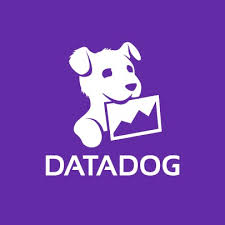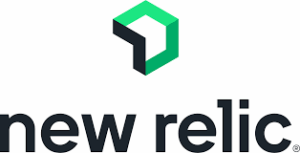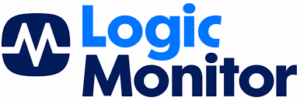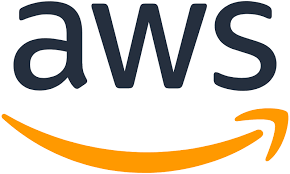Dynatrace has been around long enough to earn its reputation – powerful, yes, but not exactly lightweight or budget-friendly. Over time, plenty of teams have started looking for tools that offer the same visibility without the steep learning curve or enterprise-level pricing.
In this guide, we’ll look at some of the best Dynatrace alternatives – platforms that give you deep monitoring, solid automation, and actionable insights, minus the bloat. Whether you’re running a fast-moving startup or scaling enterprise infrastructure, there’s an option that’ll fit your stack (and your patience).

1. AppFirst
AppFirst positions itself as a platform that simplifies how teams handle infrastructure. Instead of having developers manage Terraform files, YAML configurations, or cloud-specific templates, it lets them define what their application needs while the system provisions the infrastructure automatically. The idea is to remove the typical DevOps bottlenecks and make deployment faster and more predictable across different cloud environments.
They combine automation with built-in observability, security, and cost visibility so teams can track changes and maintain compliance without maintaining separate tooling. It’s built to fit different setups, whether a company prefers SaaS deployment or hosting it themselves, and aims to give developers more control over their applications without deep infrastructure knowledge.
Key Highlights:
- Automated infrastructure provisioning across AWS, Azure, and GCP
- Built-in logging, monitoring, and alerting
- Centralized auditing for infrastructure changes
- Cost tracking by application and environment
- Security and compliance built into the provisioning process
- Works in SaaS and self-hosted environments
Who it’s best for:
- Teams that want to reduce DevOps dependency
- Developers who prefer focusing on product features instead of infrastructure
- Organizations standardizing infrastructure management across multiple clouds
- Companies needing visibility into costs and compliance without extra tools
Contact Information:
- Website: www.appfirst.dev

2. Datadog
Datadog focuses on providing observability and security features for modern cloud environments. They bring monitoring, tracing, and log management together into one system so teams can track application performance, infrastructure health, and security posture in real time. Their approach allows developers and operations teams to get context from multiple data sources without switching tools, helping them detect issues and understand how systems behave under different loads or deployments.
They also include capabilities for cloud cost tracking, synthetic and real user monitoring, and integrations with popular platforms like AWS, Azure, and Google Cloud. Their platform supports containerized, serverless, and hybrid setups, making it flexible enough to fit into most environments where visibility and incident response need to be tightly connected.
Key Highlights:
- Combined observability for infrastructure, applications, and logs
- Security monitoring and compliance tools integrated with observability data
- Real user and synthetic monitoring for web and mobile experiences
- Supports containers, serverless, and hybrid cloud systems
- Broad integrations with major cloud and open-source technologies
Who it’s best for:
- Teams needing a single platform for both monitoring and security
- Organizations operating across multiple cloud providers
- Developers and SREs managing complex distributed systems
- Companies aiming to correlate performance, cost, and security data in one place
Contact Information:
- Website: www.datadoghq.com
- E-mail: info@datadoghq.com
- Twitter: x.com/datadoghq
- LinkedIn: www.linkedin.com/company/datadog
- Instagram: www.instagram.com/datadoghq
- Address: 620 8th Ave 45th Floor New York, NY 10018 USA
- Phone: 866 329-4466

3. New Relic
New Relic focuses on full-stack observability, helping teams understand how their applications, infrastructure, and digital experiences perform in real time. They provide one platform that connects data from servers, containers, networks, and applications so teams can trace performance issues and see how different parts of their systems interact. Their platform also includes monitoring for mobile, browser, and serverless environments, along with alerting and anomaly detection.
They emphasize unified visibility rather than scattered monitoring tools, giving teams the ability to correlate metrics, logs, and traces in one place. Features like database and cloud cost monitoring, synthetic testing, and real user insights are built into the same interface, making it easier for engineers to analyze performance without switching tools.
Key Highlights:
- Unified monitoring for applications, infrastructure, networks, and user experiences
- Integrated logs, traces, and metrics for cross-system visibility
- Support for containers, serverless, and multi-cloud environments
- Tools for anomaly detection, alerting, and remediation
- Built-in features for database and cloud cost monitoring
Who it’s best for:
- Engineering teams managing complex, multi-service architectures
- Organizations that want a single place to track performance data
- Developers needing visibility across both backend and frontend systems
- Companies using multiple clouds or containerized environments
Contact Information:
- Website: newrelic.com
- Facebook: www.facebook.com/NewRelic
- Twitter: x.com/newrelic
- LinkedIn: www.linkedin.com/company/new-relic-inc-
- Instagram: www.instagram.com/newrelic
- Address: 1100 Peachtree Street NE, Suite 2000, Atlanta, GA 30309, USA
- Phone: (415) 660-9701

4. Splunk
Splunk provides a data platform designed to bring together observability and security in one place. They focus on helping teams analyze and act on large volumes of machine data from across their systems, regardless of where that data comes from. The platform collects and correlates logs, metrics, and traces to give a broader picture of how applications and infrastructure behave. Over time, this has made Splunk useful for both IT operations and security teams that need to monitor complex environments in real time.
They combine analytics and automation features with AI-driven capabilities for threat detection, incident investigation, and system monitoring. Teams can use it to detect anomalies, connect events across distributed systems, and troubleshoot issues faster. Because it integrates with a wide range of tools and cloud services, Splunk fits into hybrid or multi-cloud setups without requiring heavy reconfiguration.
Key Highlights:
- Unified platform for observability and security monitoring
- AI-driven analytics for detecting and responding to incidents
- Correlation of logs, metrics, and traces from multiple environments
- Broad integration options with cloud and on-premise systems
- Automation tools for investigation and remediation workflows
Who it’s best for:
- Organizations running hybrid or multi-cloud systems
- Teams needing both observability and security insights in one platform
- IT and DevOps groups managing large-scale infrastructure
- Security teams looking for integrated detection and response capabilities
Contact Information:
- Website: www.splunk.com
- E-mail: education@splunk.com
- Facebook: www.facebook.com/splunk
- Twitter: x.com/splunk
- LinkedIn: www.linkedin.com/company/splunk
- Instagram: www.instagram.com/splunk
- Address: 3098 Olsen Drive San Jose, California 95128
- Phone: +1 415.848.8400

5. LogicMonitor
LogicMonitor provides a unified observability platform designed to help teams monitor hybrid environments and improve IT operations. They focus on giving organizations visibility across infrastructure, cloud, and applications through a single interface. The platform integrates logs, metrics, and alerts, allowing teams to understand system behavior in real time. Instead of responding to issues after they occur, LogicMonitor’s approach is more predictive, helping teams spot potential disruptions before they escalate.
Their AI assistant, Edwin AI, supports this by analyzing data patterns and helping to reduce alert fatigue. It correlates events from different parts of the infrastructure, providing insights that help narrow down the root cause of incidents. The platform includes integrations with common cloud providers and on-premise systems, making it suitable for environments where legacy and modern technologies coexist. Overall, LogicMonitor aims to simplify operations for teams handling complex digital ecosystems.
Key Highlights:
- Unified observability across infrastructure, cloud, and applications
- AI assistant (Edwin AI) for predictive insights and event correlation
- Log analytics combined with metrics and alerts in one interface
- Designed for faster incident detection and reduced alert noise
Who it’s best for:
- Enterprises managing hybrid or multi-cloud environments
- IT operations teams needing visibility across distributed systems
- Organizations looking to predict and prevent issues proactively
- Teams aiming to streamline monitoring and incident resolution processes
Contact Information:
- Website: www.logicmonitor.com
- E-mail: sales@logicmonitor.com
- Facebook: www.facebook.com/LogicMonitor
- Twitter: x.com/LogicMonitor
- LinkedIn: www.linkedin.com/company/logicmonitor
- Instagram: www.instagram.com/logicmonitor
- Address: 98 San Jacinto Blvd Suite 1300 Austin, TX 78701 USA
- Phone: 888 415 6442
6. Zabbix
Zabbix is an open-source monitoring platform built to give organizations visibility across IT and operational technology environments. They provide a unified way to track the performance of servers, networks, cloud services, applications, and IoT devices. Since the platform is available both as a self-hosted solution and as a managed service, teams can choose how much control or convenience they want. Zabbix emphasizes transparency and flexibility, allowing organizations to customize integrations and adapt the platform to match specific monitoring needs.
Their system supports hybrid infrastructures and is designed to handle large-scale deployments without depending on license-based pricing. It includes automation features for data collection, alerting, and discovery, helping teams respond to incidents quickly. Because it is open-source, Zabbix tends to attract users who value control over their monitoring setup, as well as those looking to avoid the vendor lock-in common with commercial tools. Its community-driven development model also means new capabilities are often shaped by real-world operational feedback.
Key Highlights:
- Open-source observability solution for IT and OT systems
- Supports on-premise, cloud, and hybrid infrastructures
- Flexible deployment options with full control over data and configuration
- Integrations with major platforms and third-party tools
- Automation for data collection, alerting, and discovery
Who it’s best for:
- Organizations preferring open-source monitoring solutions
- Teams managing hybrid or distributed environments
- IT departments needing customizable observability without licensing costs
- Managed service providers handling multi-tenant monitoring setups
Contact Information:
- Website: www.zabbix.com
- E-mail: sales@zabbix.com
- Facebook: www.facebook.com/zabbix
- Twitter: x.com/zabbix
- LinkedIn: www.linkedin.com/company/zabbix
- Address: 211 E 43rd Street, Suite 7-100, New York, NY 10017, USA
- Phone: +1 877-4-922249

7. Sentry
Sentry is a platform focused on helping development teams identify and resolve issues in their applications faster. Rather than acting purely as a monitoring tool, they approach observability from a developer’s point of view, connecting errors, traces, and user sessions directly to code changes. This helps teams understand exactly where a problem started and what caused it, without digging through multiple dashboards. Their tools support many environments and frameworks, making it easier to maintain visibility across complex, distributed systems.
They also combine performance monitoring with debugging capabilities, allowing teams to trace slow transactions, replay user sessions, and analyze code coverage in one workflow. Sentry’s focus on root-cause analysis and integration into existing development pipelines makes it a practical choice for teams that prefer direct insight into application behavior rather than high-level summaries. By tying performance data back to commits and releases, developers can make targeted fixes without losing time switching between systems.
Key Highlights:
- Error and performance monitoring connected directly to code changes
- Tracing to visualize and pinpoint issues across distributed systems
- Session replay for reproducing and analyzing user-side problems
- Code coverage insights for testing and quality control
- Broad integration with major frameworks and developer tools
Who it’s best for:
- Development teams maintaining web, mobile, or game applications
- Organizations prioritizing rapid debugging and issue resolution
- Engineering teams wanting deeper visibility into their own code and releases
- Companies aiming to reduce downtime and improve release quality through continuous monitoring
Contact Information:
- Website: sentry.io
- Twitter: x.com/getsentry
- LinkedIn: www.linkedin.com/company/getsentry
- Instagram: www.instagram.com/getsentry
8. Elastic
Elastic is the company behind Elasticsearch, a widely used open-source platform for search, observability, and security. Their ecosystem combines tools for monitoring system health, analyzing logs, and detecting potential threats within one environment. Rather than focusing on a single use case, Elastic provides a flexible setup that organizations can adapt to different operational needs, from application performance tracking to cybersecurity analysis. Their observability solution builds on the same technology that powers Elasticsearch, which allows teams to handle large volumes of data while maintaining fast query performance.
They continue to expand their platform with AI-driven capabilities and automation tools to simplify scaling and data management. Elastic’s open and modular structure makes it suitable for organizations that want more control over how data is stored, indexed, and analyzed. It supports hybrid and cloud-native setups, giving teams the flexibility to deploy it where it fits best. This makes Elastic a practical option for companies that prefer an integrated, customizable approach to observability and search across their infrastructure.
Key Highlights:
- Unified observability, search, and security capabilities built on Elasticsearch
- AI-powered analytics and automation for faster insights
- Open and modular architecture adaptable to different environments
- Broad integration with cloud and on-premise infrastructure
- Scalable solution designed to handle large data volumes efficiently
Who it’s best for:
- Teams looking for a customizable observability and monitoring platform
- Organizations managing hybrid or multi-cloud environments
- Companies with strong in-house technical expertise
- Businesses that want a unified view of system, log, and security data
Contact Information:
- Website: www.elastic.co
- Facebook: www.facebook.com/elastic.co
- Twitter: x.com/elastic
- LinkedIn: www.linkedin.com/company/elastic-co
- Address: 88 Kearny St Floor 19 San Francisco, CA 94108
- Phone: + 1 202 759 9647
9. Grafana
Grafana is an open-source observability platform known for bringing metrics, logs, and traces together into one place. Their ecosystem revolves around visualization and analysis, making it easier for teams to monitor systems, applications, and infrastructure in real time. Grafana Cloud builds on their open-source foundation, offering a managed environment that supports large-scale monitoring without needing to handle the backend setup. The platform also includes integrations with popular tools like Prometheus, Loki, and Tempo, allowing teams to pull data from multiple sources and visualize it in dashboards that fit their workflows.
In recent years, Grafana has expanded its capabilities with AI-powered insights, contextual root cause analysis, and automated incident management features. These additions aim to help teams troubleshoot faster and reduce operational noise. Grafana’s flexibility and wide plugin ecosystem make it suitable for organizations with diverse tech stacks or custom data sources. Whether deployed on-premises or in the cloud, it provides a consistent and adaptable environment for teams to build their own observability workflows without being tied to one specific vendor ecosystem.
Key Highlights:
- Unified platform for metrics, logs, traces, and profiles
- AI-assisted troubleshooting and contextual alerts
- Strong integration with Prometheus, OpenTelemetry, and other data tools
- Highly customizable dashboards and visualization options
- Scalable managed service available through Grafana Cloud
Who it’s best for:
- Teams that prioritize visualization and data correlation across systems
- Organizations running hybrid or multi-cloud environments
- Developers and DevOps teams that prefer open-source flexibility
- Companies looking for a modular, customizable observability stack
Contact Information:
- Website: grafana.com
- E-mail: info@grafana.com
- Facebook: www.facebook.com/grafana
- Twitter: x.com/grafana
- LinkedIn: www.linkedin.com/company/grafana-labs

10. Paessler PRTG
Paessler PRTG is a network and infrastructure monitoring platform that helps organizations keep track of their entire IT landscape from one place. They focus on providing visibility across networks, servers, applications, and cloud environments without requiring complex setup or multiple tools. PRTG uses a system of customizable “sensors” that collect and track data points like uptime, traffic, and performance. These sensors can be configured to fit different environments, whether it’s a small local setup or a globally distributed infrastructure.
Their platform brings together data from various devices and systems and displays it through dashboards that are easy to customize. Teams can create real-time maps of their infrastructure, visualize dependencies, and set up alerts for potential issues before they escalate. Paessler also offers flexibility in deployment, with on-premises, hosted, and enterprise versions of PRTG available. The tool aims to give IT teams a single, consistent view of what’s happening across their systems while remaining adaptable to a wide range of network architectures.
Key Highlights:
- Comprehensive monitoring across network, servers, applications, and cloud services
- Customizable sensors and flexible configuration options
- Real-time maps and dashboards for visualization
- Built-in alerts and notification templates for early issue detection
- Multiple deployment choices: on-premises, hosted, and enterprise
Who it’s best for:
- IT teams that need an all-in-one infrastructure monitoring solution
- Organizations managing complex, multi-layered networks
- Companies that prefer flexible configuration and visual dashboards
- Teams looking for centralized visibility across hybrid environments
Contact Information:
- Website: www.paessler.com
- E-mail: info@paessler.com
- Instagram: www.instagram.com/paessler.gmbh
- Address: Thurn-und-Taxis-Straße 14, 90411 Nürnberg
- Phone: +49 911 93775-0

11. Amazon Web Services (AWS)
Amazon Web Services is a cloud computing platform that provides a broad range of infrastructure and application services for organizations of all sizes. They offer tools that help teams run applications, manage data, analyze performance, and build scalable digital environments. In the context of observability and monitoring, AWS provides services that allow users to track metrics, logs, and traces across their infrastructure through built-in tools like CloudWatch and X-Ray. These capabilities make it possible to identify performance bottlenecks, manage workloads, and maintain visibility into distributed systems without relying on multiple third-party solutions.
Their platform is structured to support a variety of use cases, from hosting applications and managing storage to running analytics and machine learning workloads. For teams comparing Dynatrace alternatives, AWS can serve as a centralized environment for monitoring and management, especially when operations are already based in the AWS ecosystem. Since everything runs within the same cloud environment, it reduces the need for separate integrations while giving technical teams direct access to detailed performance and reliability data.
Key Highlights:
- Unified cloud platform with built-in observability tools like CloudWatch and X-Ray
- Broad set of infrastructure and analytics services for end-to-end visibility
- Integrates seamlessly with other AWS and third-party monitoring solutions
- Scalable setup suitable for workloads of any size
- Global infrastructure ensuring consistent performance across regions
Who it’s best for:
- Organizations already using AWS as their primary cloud environment
- Teams that prefer a single platform for hosting, monitoring, and managing workloads
- Developers building cloud-native or distributed applications
- Businesses looking for scalable, infrastructure-level observability without external tools
Contact Information:
- Website: aws.amazon.com
- Facebook: www.facebook.com/amazonwebservices
- Twitter: x.com/awscloud
- LinkedIn: www.linkedin.com/company/amazon-web-services
- Instagram: www.instagram.com/amazonwebservices

12. SolarWinds
SolarWinds provides IT management and observability solutions designed to help organizations monitor, analyze, and troubleshoot their digital environments. Their platform brings together infrastructure monitoring, database management, and incident response tools under one roof. They focus on making complex systems easier to understand by offering unified dashboards and data visualization features that track performance across networks, servers, and applications. By combining observability with automation and AI-assisted insights, teams can identify issues faster and reduce downtime.
Their products are built with flexibility in mind, allowing integration with hybrid and multi-cloud setups. SolarWinds aims to give IT teams better visibility into their environments without requiring extensive customization. They also provide tools for IT service management and digital experience monitoring, which helps teams maintain consistent service quality. For those exploring Dynatrace alternatives, SolarWinds stands out as a platform that supports a wide range of operational needs in one environment, from traditional infrastructure monitoring to AI-assisted observability.
Key Highlights:
- Unified platform for infrastructure, application, and network monitoring
- Integrated tools for incident response and service management
- AI-assisted analytics for detecting and resolving performance issues
- Supports hybrid and multi-cloud environments
- Customizable dashboards for visibility across systems
Who it’s best for:
- IT teams that need a single platform for observability and management
- Organizations running both cloud and on-premises infrastructure
- Companies looking to streamline performance tracking and issue resolution
- Teams that prefer flexible monitoring tools with built-in automation
Contact Information:
- Website: www.solarwinds.com
- E-mail: sales@solarwinds.com
- Facebook: www.facebook.com/SolarWinds
- Twitter: x.com/solarwinds
- LinkedIn: www.linkedin.com/company/solarwinds
- Instagram: www.instagram.com/solarwindsinc
- Address: 7171 Southwest Parkway Bldg 400 Austin, Texas 78735
- Phone: +1-866-530-8040

13. Sumo Logic
Sumo Logic focuses on continuous intelligence through cloud-based analytics that help teams understand and manage their systems in real time. They combine log management, observability, and security analytics in one platform, allowing teams to investigate issues, detect threats, and make data-driven decisions. Their approach centers around turning large volumes of machine data into practical insights that can be used to improve performance, reliability, and security operations.
They’ve also leaned into the use of AI and automation to simplify how teams handle incidents and detect anomalies. The platform supports a range of integrations, giving users flexibility across different environments. Instead of only tracking metrics, Sumo Logic helps teams connect the dots between logs, traces, and events, which can be especially useful for distributed systems or complex cloud setups.
Key Highlights:
- Centralized log analytics for monitoring and troubleshooting
- Cloud-native SIEM for threat detection and incident response
- AI-driven insights to reduce alert fatigue and automate investigations
- Broad integration support with cloud platforms and enterprise tools
- Secure by design, with certifications covering major compliance standards
Who it’s best for:
- Teams running large or hybrid cloud infrastructures
- Security and operations teams looking for unified visibility
- Organizations wanting to streamline monitoring and threat detection in one place
- Businesses needing scalable log management without heavy infrastructure setup
Contact Information:
- Website: www.sumologic.com
- E-mail: sales@sumologic.com
- Facebook: www.facebook.com/Sumo.Logic
- Twitter: x.com/SumoLogic
- LinkedIn: www.linkedin.com/company/sumo-logic
- Address: 855 Main St., Suite 100 Redwood City, CA 94063
- Phone: +1 650-810-8700
14. Prometheus
Prometheus is kind of the Swiss Army knife of monitoring for developers who love metrics. It’s open-source, lightweight, and focused mainly on time-series data, so it’s not trying to do everything at once like some full-stack observability platforms. What’s cool is how flexible it is. You can slice and dice data however you want using PromQL, their query language, and it stores everything locally so you’re not dependent on a cloud service. This gives you a lot of control – though, full disclosure, you might spend a bit more time setting it up compared to some commercial tools.
It’s especially popular in cloud-native setups, like Kubernetes, because it integrates really well and has tons of community-supported exporters to pull data from all kinds of systems. Alerts are handled through a separate component called Alertmanager, letting you get really precise about what triggers notifications and when to silence them.
Key Highlights:
- Open-source and community-driven monitoring solution
- Uses a dimensional data model for detailed time-series analysis
- PromQL enables advanced querying and correlation of metrics
- Works well with Kubernetes and other cloud-native environments
- Independent operation with no external dependencies
Who it’s best for:
- Teams looking for a customizable, open-source monitoring setup
- Organizations using Kubernetes or other containerized environments
- Developers who prefer hands-on control over their observability stack
- Those who want to build flexible, metrics-focused monitoring workflows without vendor lock-in
Contact Information:
- Website: prometheus.io
Conclusion
Finding the right Dynatrace alternative isn’t really about choosing what’s “better” on paper – it’s about figuring out what actually fits how your team works. Some tools lean heavily on automation and AI-driven insights, while others stick to open-source principles and give you full control. The differences might seem small at first, but in day-to-day use, they can shape how fast you catch issues, how clearly you see your systems, and how much time you spend managing the platform itself.
The good news is that the observability space in 2025 is wide open. Whether a team wants a managed service with strong integrations or a more hands-on approach with open tools, there’s plenty of flexibility out there. What matters most is finding a balance between visibility, simplicity, and the amount of ownership you want to keep over your data and workflows. In the end, the best alternative is the one that feels natural to use and genuinely helps your team stay ahead of problems before they grow into real ones.


